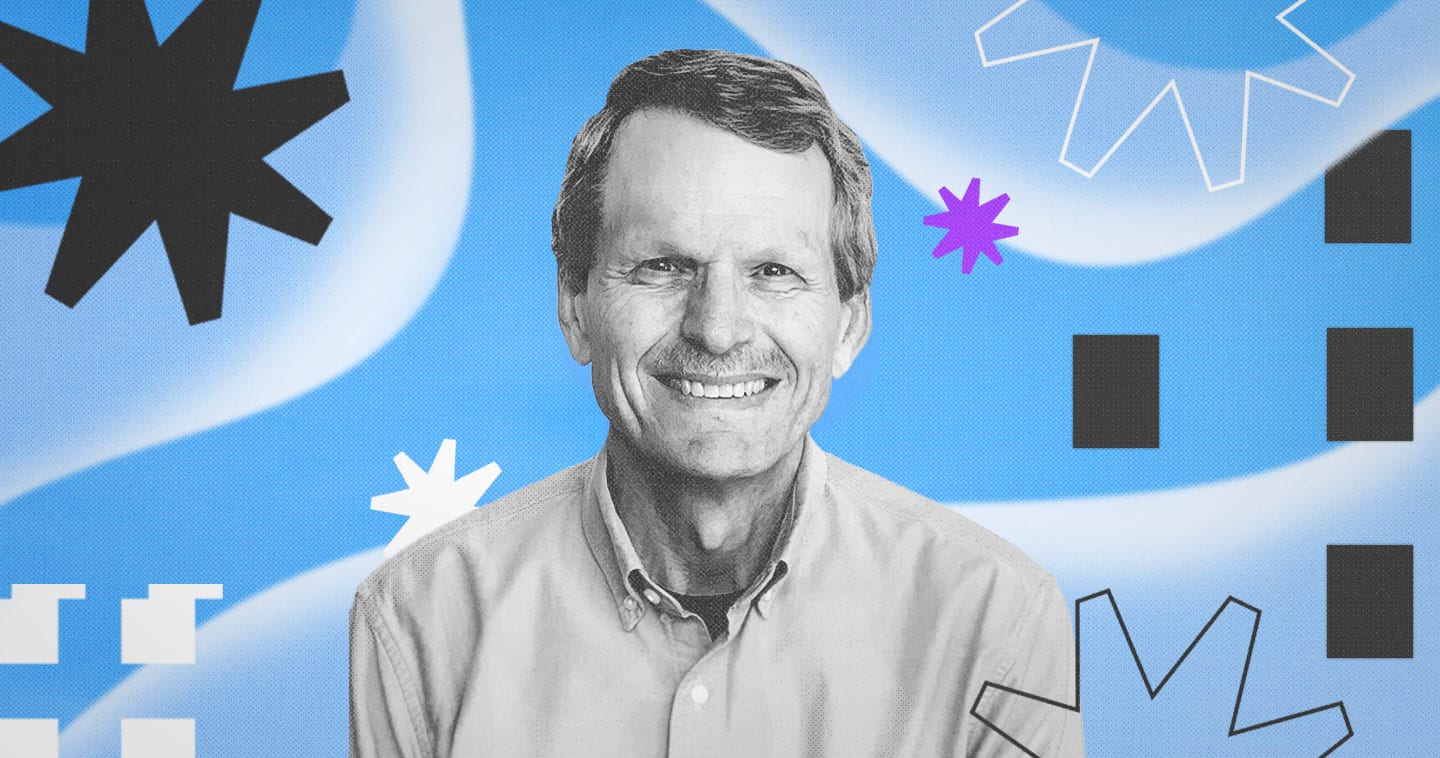Neil Robertson: Finding the Right Mix for Innovation
Neil Robertson is always on the lookout for the next big thing. As vice president of physical science research at Western Digital, Robertson is responsible for uncovering breakthrough technologies and bringing innovative ideas to fruition.
Robertson manages teams of chemical, electrical, materials science, physics, and mechanical engineers who together investigate potential future data storage technologies. His teams work in tandem to investigate emerging memory materials and storage technology innovations, from sensors to neuromorphic computing to using DNA to store data. The magnetic storage industry’s only Nanoscale Lab is also under his and his process engineering team’s charge. Much like managing a stock portfolio, Robertson says you must consider many ideas and see which ones are viable enough to hand over to product development.
“Not every idea is going to turn into a product,” said Robertson. “That’s what research is all about. There will be winners and losers, and you’ve got to be net ahead with your projects.”
A chemistry lens
Robertson earned his bachelor’s degree in chemical engineering from Cornell University and a Ph.D. in chemical engineering from UC Berkeley. His background was a natural fit for HGST’s hard disk drive (HDD) business when he joined the company. (Western Digital later acquired HGST).
“In chemistry you have to see how to mix things together,” said Robertson. “In HDD development there are a lot of different engineering specialties that need to be coordinated.”
Robertson explained the different fields that come together. For example, there is the mechanical aspect of moving data around. Then there is the recording head, which is like making a semiconductor circuit involving material science, chemistry, and device physics to make complex-shaped devices that take electrical information, turn it into magnetic information, and then convert it back. Finally, signal processing circuits and error code correction involve electrical engineering skills.
“Something I learned in chemical engineering that was useful in the HDD business is that you look at things from a systems point of view,” he said. “You don’t just look at one thing; you have to broaden your scope and appreciate the adjacent things going on to make a device work.” It’s much like the moving parts of a football team where every position plays a role in the ultimate success of a play.
Propelling increases in areal density
Robertson made an impact on the company’s R&D early in his career when he conducted research in making a magnetic recording head that could read one gigabyte per square inch (which was impressive at the time).
“Today, we measure terabytes per square inch, which is a 1,000-times improvement in how much data can be stored in the same space,” said Robertson. But increasing that areal density required a lot of new technologies that had to work together.
Robertson’s team evolved three generations of read heads, which advanced as device speed needs increased: from magneto resistive (MR) recording heads to giant magnetoresistance heads (GMRs) to tunnel magnetic resistance heads (TMR). But crafting these new technologies also required finding new materials that would enable these inventions.
Recording heads require higher moment materials (materials that possess higher magnetic strength) to write smaller and smaller bits of data. Robertson has earned several patents on how to implement these higher moment materials. One of his first innovations productized was a nickel iron alloy, which enabled a 60% increase in moment in one step.
Another key part of recording higher densities of bits is the spacing between the head and the media. This value is measured in nanometers in HDDs. Among Robertson’s patents, he is specifically proud of his work in thermal fly height control (TFC), which is a way to change the spacing between the head and the disk in a tightly controlled fashion.
What started as a way to assist recording by heating the media with a resistive heater in the head didn’t initially work out. However, further study showed improvements and it was found that the heat was making the head and media closer due to thermal expansion of the materials in the head. This understanding led to concepts to use this phenomenon and was labeled TFC. TFC was implemented in HDD products where versions of the technology are still used today.
“As recording technology advanced from MR to GMR to TMR, bits got smaller so we had to make read heads better, faster, and with higher density,” said Robertson. “The more bits packed per square inch store more data in the same space to increase areal density; today you can have a 26TB HDD in the same space that used to hold only 20MB.”
In and out of this world
At one point in his career, Robertson took a break from research to head a team working on a new tape head concept. This was the first-generation head for a new tape system called Linear Tape Open (LTO). The idea was to combine concepts from HDD head technology into tape heads and put tape heads on a faster technology roadmap. This cross fertilization of ideas worked, and LTO has been highly successful with LTO Gen8 now shipping.
Robertson found the opportunity to work in different areas a great way to expand his skills. After this project, he returned to research to work on another set of ideas. His focus wasn’t just on new materials needed for innovation but on the people and equipment.
With each evolution of HDDs, emerging memories were built at the nanoscale, with parts getting smaller and smaller. Nanofabrication (in the Nanoscale Lab) became one of the research team’s specialties. Within its walls lives a host of tools including high-powered microscopes, electron lithography beams, and deposition tools used in nanoscale R&D. These tools allow engineers to pattern and transfer device components at 20 nanometers or less.
The biggest challenge
Research is an open field with endless possibilities. The hardest part, Robertson acknowledged, is deciding what to work on.
When evaluating a project, Robertson has three considerations in mind: What is the problem we can solve? What skills and resources are we already good at? And how does this fit the business?
With these questions in mind, Robertson and his team find opportunities for the company to create what’s next.
“At a certain point, force yourself to do a demonstration that puts a stake in the ground of where you are,” said Robertson. “You’ve packaged up the materials and the processing and the device to see how they all work together. That way you can measure and make sure (the project) meets your expectations.”
For Robertson, failures can lead to success. Even if an idea doesn’t turn into a product right away, it can spin off into another idea that may lead us to the next discovery.
“In research we’re always thinking about what’s next,” said Robertson.




